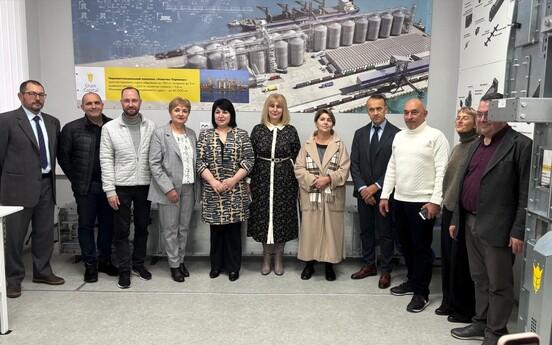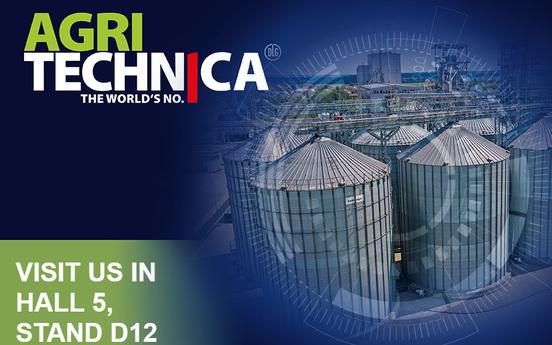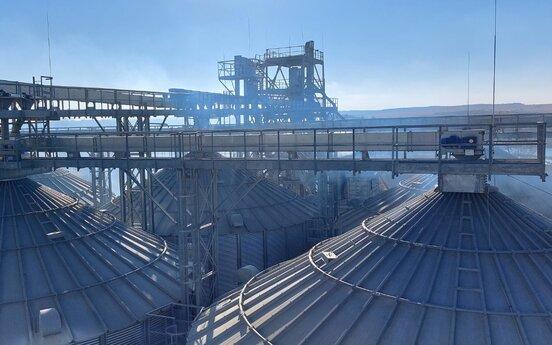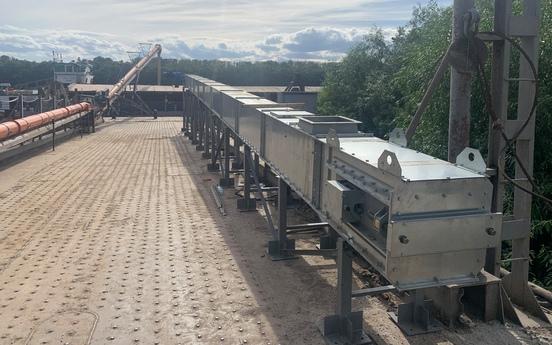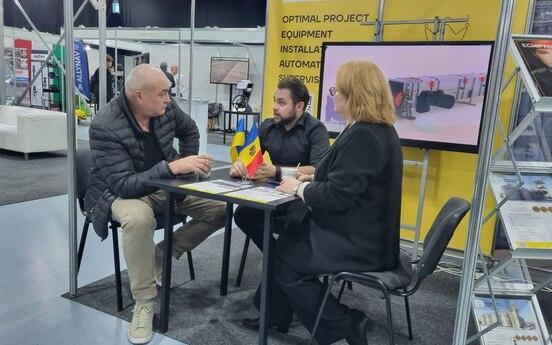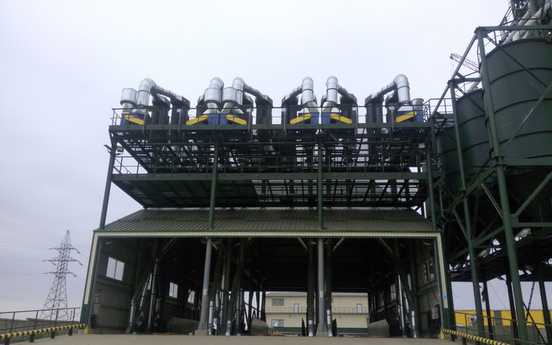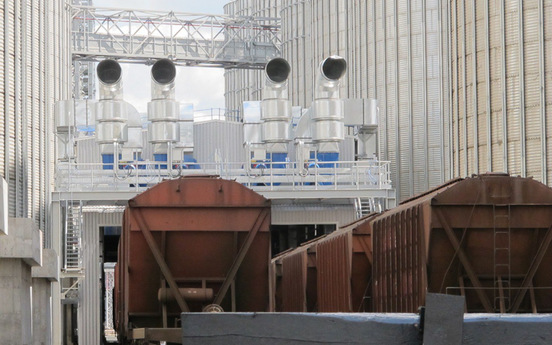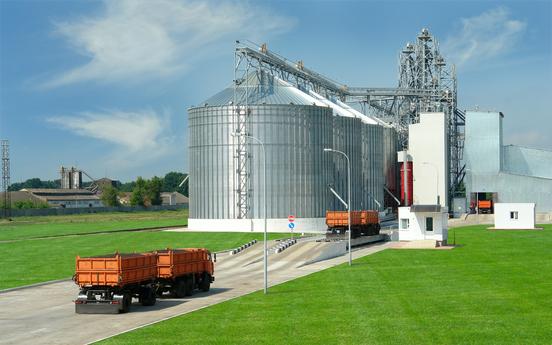New normative documents for the design of aspiration plants

New normative documents for design of aspiration installations - "Rules for design and adjustment of aspiration installations of grain storage and processing enterprises"
Increase of technical level of enterprises of grain processing industry of Ukraine, creation of energy-saving and ecologically clean productions are directly connected with the solution of problems of environmental protection, provision of proper working conditions and fire-explosion hazard. One of the most common means for solving these problems are technological and aerodynamic means of dedusting. However, their effectiveness at the enterprises of grain materials processing remains insufficient.
Unsatisfactory operation of aspiration installations has been observed at grain storage and processing enterprises so far. This leads to high concentration of dust in production facilities, which negatively affects the health of personnel, worsens the sanitary condition of enterprises, leads to violations of the technological process and increased energy costs.
Significant dustiness of the air in working premises is the cause of explosion hazards - catastrophic explosions at enterprises. Every year in the world about 100 explosions of dust-air mixtures occur at grain storage and processing plants. Due to the lack of proper aspiration system regimes and designs, dust accumulates on work surfaces, contributing to the spread and maintenance of fire and explosions through extensive dedusting systems. In addition, the use of existing aspiration systems demonstrates insufficient reliability, significant environmental pollution and high energy intensity - energy consumption exceeds the required values by a factor of two or more.
Low efficiency of existing dedusting systems is caused by two main problems:
- Imperfection of the current regulatory and technical base of design of aspiration systems, lack of norms for design of installations for technological lines with productivity over 175 t/h.
- Lack of effective methodology of maintenance organization of modern aspiration installations.
Today the methodology of aerodynamic calculations of dedusting systems is mainly based on normalized values of pressure flow rates and aspiration air losses. The method of determining the parameters of dust removal sources through "equivalent gravity flows" makes it difficult to obtain reliable values of parameters of dust-air flow productivity. In addition, as production practice shows, these parameters depend on a number of factors, including the aerodynamic resistance of the equipment shelter, the layout of their leakage zones and the type of grain materials.
The complexity of designing aspiration systems lies in the fact that the current design rules more or less normalize the construction of dedusting systems of technological lines with productivity up to 175 t/h, while the strategy of reconstruction of existing enterprises and construction of new ones in Ukraine provides for the use of lines with productivity from 175 to 1500 t/h (marine grain terminals, etc.). The lack of a well-founded normative and technical base and methodology of creation of aspiration systems of powerful transport and technological lines became the reason of their low efficiency (energy intensity exceeds practically necessary values in 2-4 times); dedusting process is carried out in the range of 30-40% of the necessary value. Attempts of design organizations to create dedusting systems without the appropriate regulatory framework and methodology lead to various, unreasonable and sometimes absurd technical solutions. As a result, dustiness of working premises exceeds maximum permissible concentrations (MPC) of grain dust by several times, and environmental pollution exceeds normative values by 5 times.
The practice of using dedusting systems raises a number of questions on energy efficiency and quality of dust-air mixtures cleaning - the answers to these questions are absent in the current regulatory documents. Studies conducted by the research and production complex of Odessa National Technological University (ONTU) and GC "Grain Capital" proved that the requirements to the mode characteristics (Qa - air flow rate, Ha - pressure losses) are significantly overestimated. As a result, the dedusting efficiency is 60% less than the required value.
Significant tightening of requirements to the ecological state of the environment, fire and explosion hazard, participation of Ukrainian organizations in global world projects "Green construction" and "Green Buildings" necessitates the creation of fundamentally new dedusting systems.
Various studies of dust removal process and dust removal at grain processing enterprises of new generation, conducted by scientific and production complex ONTU and GC "Grain Capital", allowed to create new "Rules of design and adjustment of aspiration installations of enterprises for storage and processing of grain".
These rules are based on the construction of dedusting systems in three stages:
- Development of means of suppressing the dust-forming capacity of dust removal sources.
- Creation of equipment shelters with reasonable tightness.
- Design of aspiration plants with fully synchronized aerodynamic characteristics and dust removal sources.
The basis for the creation of new aspiration systems is the management of their operation quality indicators depending on the state of dust-air environment of dust removal and dust extraction sources, design features of transportation-technological lines and their aerodynamic parameters.
Determination of rational parameters of dedusting systems is carried out by synthesizing the main constituent elements, among which the elements of lines and their aerodynamic relations are distinguished. The structural scheme of transportation-technological lines is presented in scheme No. 1.
Plots on the basis of dust removal stability are divided into three types: constant productivity (transit), variable productivity (variable volume), material accumulation (non-transit).
Depending on the productivity and pressure flow rate of dust-air streams three types of links are distinguished: full, partial, broken. The first one means connections between the sections in the absence of pressure losses and productivity of dust-air flow. The second one defines partial changes in resistance and productivity, and the third one - complete absence of interrelation of parameters of dust-air flows of connecting sections.
Aerodynamic characteristics and air pressure distribution are obtained by synthesizing the characteristics of elements and equipment. The process of determining the optimal dedusting system, its composition, structure and operation parameters involves two stages. At the first stage, the optimal layout solutions of aspiration extraction with minimization of material costs are established. At the second stage for the dedusting system of the optimal structure the parameters of aspiration intakes are determined, providing the minimization of energy spent on the system functioning.
The final choice of the type of dedusting system (local, branched) is established by comparing the total costs. The principle scheme of creating effective dedusting systems is presented in Fig. 1.
Suppression of dust-air environment |
Localization of dust-air flows |
De-dusting of dust emission sources |
||||||||||||||
|---|---|---|---|---|---|---|---|---|---|---|---|---|---|---|---|---|
|
|
|
|
||||||||||||||
The new rules realize the idea of expedient application of local aspiration, which is installed directly at the source of dust emission and includes the functions of dust collection, aspiration reception and dust removal, reduction of dust-air mixtures. Elimination of traditional means of aspiration at the stage of dust transportation to waste hoppers and direct dedusting of dust emission sources allows reducing energy costs, increasing the degree of dedusting of aspiration air from 60% to 90-96%, as well as increasing the reliability of installations (eliminating the need to use sluice gates and avoid clogging of dust in ducts).
The developed design provisions and methods of determining the modes of operation of aspiration plants were tested from 2011 to 2014 at a number of enterprises of the industry and allowed not only to meet the regulatory requirements of environmental safety, fire and explosion safety, but also to significantly reduce the energy intensity of the systems while ensuring appropriate reliability.
Application of new rules for design and adjustment of aspiration plants at grain storage and processing enterprises when creating dedusting systems of basic enterprises allowed to establish high efficiency, compliance with modern regulatory requirements with simultaneous reduction of material and energy intensity by 1.5-2 times compared to traditional aspiration plants.
Authors:
Gaponyuk A.I., Head of the Department of Technological Equipment of Grain Productions (TOZV) of Odessa National Technological University (ONTU), Professor, Doctor of Technical Sciences.
Gaponyuk I.I., Professor of the Department of Technology of Grain Processing Production (TZPP) of the National University of Food Technologies (NUPT), Doctor of Technical Sciences.
List of used literature:
Rules of design of aspiration systems of grain processing industry. - K.: Ministry of Agriculture and Food of Ukraine, 1995. - 190 с.
Rules of design and adjustment of aspiration installations of enterprises for storage and processing of grain. - Odessa-Kyiv, 2014. - 120 с.
